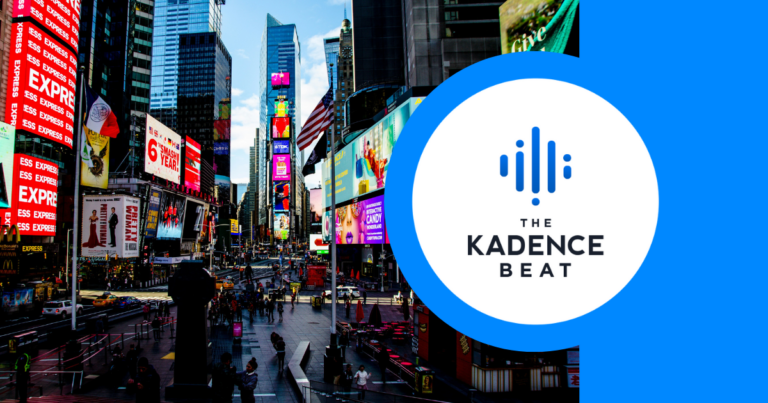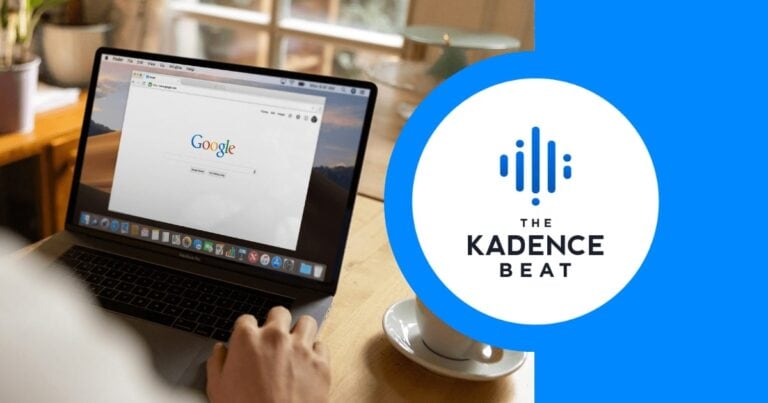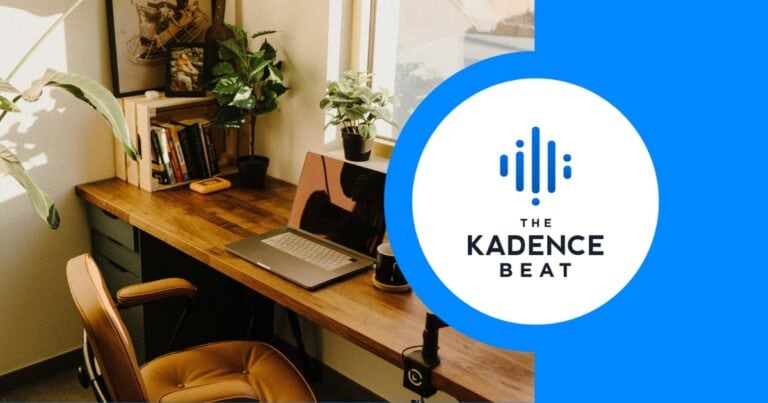Episode 15: Finding your Beat: Brand Building Fundamentals
Whether you’re just starting a business or you’re looking to improve your business’ marketing, naming and branding your business can make or break your efforts to grow revenue. In this episode of The Kadence Beat, we look at the challenges of naming a business, coming up with logos, color schemes, and of course why this is all so important. A strong brand is critical to so much of marketing, but how do you establish that strength? We talk a little about how Kadence was named and the story we have to our brand, as well as some iterations of other brands we’ve worked with. We also talk a little about StoryBrand and why their philosophy works so well for marketing.
Listen via the controls below, or add us to your favorite podcast app.
Timestamps & Links
- 0:00 Intro
- 3:06 Kadence Shop Kit 2.0, the launch and the livestream
- 3:38 Development in the Kadence Blocks plugin
- 5:44 Why we’re talking about brand identity
- 7:58 The story behind Kadence’s name and brand identity
- 14:00 Why brand identity is so important to marketing
- 15:20 Brand identity & customer aspirational identity
- 18:36 The importance of a tagline
- 19:19 Pinnacle Foods tagline
- 20:52 StoryBrand
Early Kadence Logos
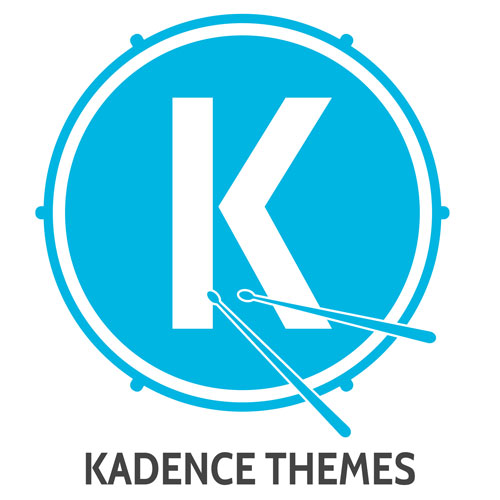

Transcript for Episode 15
Kathy: Welcome to episode 15 of The Kadence Beat. It has been a minute, but it’s also been August. And there have been mountains to climb and heat to escape from. So we’ve been a little busy, had a few product launches, couple of sales here and there. How have you guys been? You guys have been busy?
Ben: Busy. Yep.
Hannah: it’s been busy. It’s summer, right?
Ben: yeah. Out in, Northwest US, summer is when you just hit the ground running with all the things you’ve been dreaming about doing all winter.
Kathy: So, what have you done? Where have you been? Did you see any bears?
Ben: No bears, definitely lots of bear sign. I was in the Bob Marshall, last week or this week. Yeah, this. And, yeah, lots of rocks that have been pushed over by bears, looking for ants and things like that. So that would be mostly black bears, but there was a lot of that kind of thing.
Hannah: Nope. I’m good.
Kathy: You’re not doing the bear scene?
Hannah: For me, it’s snakes. We have so many snakes in Idaho. The other day I went to go watch the meteor shower and we went to go lay out on this nice rock. And there was a rattlesnake and I almost died. It rattle at me. I cannot. I just really cannot.
Ben: That is pretty intense though. That’s like…
Hannah: So we watched the meteor shower from the car we actually laid on top of the car.
Ben: That’s cool. How big of a snake did you get a good look at it?
Hannah: I saw it all coiled up and I walked away. I said, Nope, we cannot stay here.
Ben: That’s crazy. Yeah. Thankfully in Missoula, we don’t have that many snakes. I mean it little garters here and there, but you rarely see snakes. but yeah, Eastern Montana has loads of rattlesnakes.
Kathy: Yikes. Yeah. Don’t even ask me about Texas and snakes. I have, I joined the Facebook group for Texas snakes identification, cuz I was like, there’s just so many.
Hannah: Oh my gosh.
Kathy: And actually, I’ve kind of gotten rid of a lot of my fear of snakes because I have identified which ones are like the scary, dangerous ones. Everybody will put post pictures of snakes and “need an ID right away.” So then all these people come in and identify. And now that I feel like I can identify them, I’m not scared of them anymore. Cuz I I’ve seen tons of snakes in the yard, and I have not yet seen a poisonous snake here. That’s me knocking on well, almost wood. I’m just not up for it. Yeah. I’m with you, Hannah. No snakes, on top of the car for meteor showers, for sure.
Well, we’ve also been busy with a lot of product work too.
We’ve just launched Kadence Shop Kit 2.0, to quite a bit of fanfare. We had a livestream that’s up on YouTube and we’ll have a link to that in the show notes, but lots of people came and asked questions. And Ben, you did just an amazing demo of this very innovative product that has 15 different modules that will beef up what you can do with WooCommerce. Yyou guys have seen the fanfare as well, are we seeing any real cool things that people are doing with Shop Kit thus far?
Ben: I’ve just seen a couple, I can’t even think of them right now, but I have seen a couple people’s product pages that I’ve thought, oh, that’s cool. That’s a good way to lay it out. So yeah, I’m really excited about where that’s going. I think one thing we’ve just been talking about internally is creating some kind of a starter template where you can really get access to all of that stuff pre-built with the products and everything. So you can more easily play around with some of the more advanced, features inside of building custom product pages using Gutenberg. So, yeah, that’s fun. I’m excited and I’m excited cuz everything we do in blocks even further that along. The updates that are coming for Kadence Blocks, it’s gonna make Shop Kit better because Shop Kit uses Kadence Blocks editor. So that’s really exciting.
Kathy: Right. The team is really focused right now on getting Kadence Blocks speeding up the underlying code base and making everything much more performant, as well as adding some new features to Kadence Blocks. Can you talk a little bit about, uh, what the team’s up to and what people can expect with what’s coming with Kadence Blocks?
Ben: Yeah. So we did a, a big rewrite of the whole structure of Kadence Blocks. Just how all of the code communicates and works. There will be some performance improvements because of that also like a really good, some better longevity in the structure, easier to add more things to it. As we got on the road and easier to build on it. And so with that, literally every file has changed. We’ve kind of gone through and reorganized everything, just knowing what we know now. When Kadence Blocks was originally built, that was right at the front end of Gutenberg. And now we’re going, okay we’re three years into Gutenberg now. So, let’s really re-look at, how do we make this structure long term. And also how do we set up our settings to where it’s just easier to navigate. We’re doing a lot more focus on kind of in different components, having a basic and advanced modes. So there’s easier ways if you want to do a lot of the same things more than once you can.
And then, you know, bigger features like we’re doing a brand new form block and rewriting the Row Layout block, which is gonna be super, super powerful. It’s so hard, cuz I see where it’s going so early and then there’s so much like, you know, work in between that and it being done, but I’m, I’m really, really excited.
Kathy: Yeah, I am excited too, and I know that there are a lot of people who are using Kadence Blocks, who are watching what’s happening and are excited to see all of the new improvements that are happening. This refactoring is really going to help just adding new features and being able for our team to, grow what Kadence blocks can do. So cool.
For this episode, Hannah, this was your idea. And I think it’s a great idea because there’s a lot of people who come to Kadence looking to create a website that’s new, maybe something new in terms of they’re doing an affiliate blog, or maybe they’re starting a brand new business and getting that vision that brand, identity, even choosing a name is so important at that initial stage. And it can be daunting because it feels so important.
It is so important because just when, when we say Kadence, it says so much. Right? So this whole idea is yours, Hannah. So I’d love this love to hear some of your thoughts behind that. And then I’d also like to hear from Ben, how Kadence came to be. So I’ll go with you, Hannah.
Hannah: Yeah. Well, I had this idea because I was on the trip with a friend and she’s an entrepreneur and she is a freelancer and she’s just constantly like gotten new ideas, but she had this whole business that she had created and she had all the branding lined up and everything pretty dialed in but she was just waiting on coming up with a perfect name for her business. And we spent hours talking about, okay, who are you? What do you want to represent? What are words that you like? What are synonyms of that word? What are, you know, what sounds good? What’s like appealing. And we sat on so many words and then a month later, she chose something that we never talked about and knew was completely different than what we had said. But this whole time, I’m like, we should do a podcast on this because it can be totally daunting. Like I remember I had a blog years ago and just trying to come up with a name for it was the most stressful thing ever.
Like I would just lay there and be like, I could do this. What do I like to do? You know, it’s like, and then I didn’t even like when they, they ended up choosing. but we wanna help you like your name. So anyway, I just thought it would be a fun conversation to have about how to really establish your brand.
And I think the name of your brand is a huge piece to that. But yeah. Ben, tell us how Kadence did come about how did you choose Kadence? And I know we’ve brainstormed so much of the coming up with names for each theme and all of that, but I wasn’t around when you named Kadence.
So how did that come about?
Ben: Yeah. So, well, first I developed a theme and I called it Virtue and that was like the first into a name. And then, when I ended up deciding I was gonna sell that and do a business that’s when I needed a brand name. So I already had some identity in this Virtue thing with the theme, I had already looked at a lot of words at that time, just cuz I was thinking about themes and I had like this huge list of words that could work with a theme.
It is a little bit different than branding, but one of those words was cadence. And I liked the meaning. I liked the fact that it had kind of a, a shoe-in with code where one of the meanings is like a rhythm of a language. And so this idea of like code being a language and there being a rhythm to it, I kind of thought that was cool, but I also loved the fact that Kadence in this rhythm also could relate to your life and being so inspired by the mountains and being so inspired by, spending time outside.
That really was like, I wanted to create a brand that identified with having the right rhythm. In your life, having the right rhythms for the way that you work, and the way that you play and all that stuff. So, yeah, it felt nice. The K instead of the C was, I just, you know, it was funny. It was primary cuz I thought it looked cooler. There wasn’t really much more reason than that. I understand that the word is correctly spelled with the C, and you know, it’s funny, in my advice to people I’m like, don’t use funky spellings of words, like that rarely works. And then I’m like, but I also did that. So, you know, there’s always like rules and then, you know, whatever.
And so yeah, Kadence with a K was because I like the look of the K better than the C I like the word Kadence. So that’s how it came to be at the time. We weren’t really thinking very future proof. It was Kadence Themes was the original brand name. And then we did a big rebrand in 2018 to Kadence WP early 2019, to kind of encompass that we were not just a theme company, that we were gonna become more of plugins and themes and focus on the front end.
And then too, like, as I grew and understood more about marketing and everything else, the identity kind of solidified a little bit more in terms of we, as a company, we wanna help people make effective websites That’s just the goal we’re always going back to, how do we help people make effective websites?
What do they need to make an effective websites and how do we help them get there? And so, if I had to do it all over again, I think it would approach it totally differently. I just kind of backed into this one, but yeah, naming is, is very hard. Now we name our products, basically Kadence and then some other word, so it’s a lot easier. But even in the past, coming up with theme names when we did Ascend and when we did Pinnacle, it was, tricky to figure out which what’s the right way thing to call something. It’s it’s just hard to find the right words to call something.
Kathy: One of the most popular comments we get on YouTube is “my name is Kadence with a K!”
Ben: It’s it’s a Latin American name is very popular. Yeah, I mean, it’s a popular name now, but yeah.
Kathy: It’s a, it’s a pretty name too. I imagine like young girls named Kadence with a K and it kind of fits. But I, I mean, well, it kind of goes into, there’s just this vibe of elegance to it as well. I think it fits for, somebody’s child wanting to name your child something that has a beautiful name to it.
But also like what we’re doing with Kadence, giving people the ability to create really beautiful designs, that are extremely fast and elegant. And I think that it just sets the stage very well. So kudos to you on a wise choice. And once you chose the name, did that kind of lend itself to logo and, color schemes and all of the identity branding types of things that people would normally put into sort of a graphic design brand book?
Ben: Yes. I mean, our original logo was a drum. So the very first Kadence logo was, a snare drum. And then the second iteration of that was a snare drum on its side. Once you had the name, it was like, let’s make a logo that fits this name. The current logo, which I actually liked, and I still like, and it’s been a number of years, so that’s, that’s a big win. As a designer, you always, you like something for like a year and then you’re like, okay, I’m ready for something new. But I actually really liked the current logo and yeah, going away from the drum, we went more of like, almost like sound waves, that you’d see, like on digitalized sound things, kind of the idea with a K.
Kathy: Yeah, I see different blocks being… building into something that is more solid, you know, from left to right.
Ben: Nice. Yeah. I mean, it was, it was, yeah, it was just kind of a play in that idea of, of rhythm and motion. So
Hannah: I forgot about the drum.
Ben: You forgot about the drum. Yeah, that was our logo for a long time. Yep.
Hannah: For a long time.
Ben: had a drumstick and everything.
Hannah: That’s funny.
Kathy: Very cool. And now we’re, we’ve got our podcast, The Kadence Beat. So the drum could come back.
Ben: We could, could bring that drum back.
Hannah: Full circle.
Kathy: There we go. Probably have to dig up that logo and make it the, the icon for the, this particular show.
Hannah: Yeah, we should. That’s funny.
Ben: I mean, in terms of color, it’s tricky. It’s hard not to have a blue as your brand. Like I think you have to really, really try to not end up with blue as your brand color.
Hannah: Hmm.
Ben: It just, it just seems to be that way. Like some of the other colors just tend to come across, you know, red can be it’s too much too…
Hannah: Too Target.
Ben: Too, in your face. And so, yeah, it’s tricky. I think, blue is just we think about color theory. It just is the one that’s just very easy to choose.
Kathy: It’s a good, non-confrontational, foundational color. that just makes people feel peaceful. Like you’re at the ocean or staring at the clouds at a mountaintop. Yeah, it’s the easy color to choose. And I keep defaulting to, anytime I do anything, I default to a blue. I actually had to work on a project with my daughter who’s 14 and has her own style.
Right. And she’s like going all neon and everything. And I’m like, we’re not in the nineties, but I guess nineties are back now. Um, but yeah, she wanted like hot neon pink, hot vibrant blue. And it was hard. It’s her project though. So I had to go with it and it was so uncomfortable for corporate me.
Ben: That’s funny.
Kathy: I don’t know, this is why I don’t do design. So now that you’ve got your color and you’ve got your logo, and you’ve got an idea of what you’re trying to communicate, what are kind of like the next steps that you do in developing sort of your brand and your brand strategy. And I think this is really important because when you’re doing marketing, when the brand is strong and you have a good brand vision, and you’re communicating that clearly and consistently over a long period of time, it makes every other marketing thing work well. It’s kind of like if you don’t have a brand and you’re trying to do marketing, it’s like trying to drive a car with square wheels, and I’m stealing this from someone. And I don’t remember who, but when your brand is working really well, it’s like you have all the wheels, right amount of air in the tires and everything just kind of rolls downhill very easily.
Cuz the brand just kind of lubricates all of the, why do I have all of these car metaphors? I don’t want them, my car caused me so much drama this week. But it it’s kind of like you, you just have everything is in its right place and it just kind of makes everything much smoother when your brand is strong.
So how do you kind of set that stage for consistency in your marketing with your brand? Do you guys have ideas on that?
Ben: Yeah, I think it’s important, you know, we said about Kadence, but there’s some good guidelines for choosing that name that I would say you should look at, cuz that all plays into this brand identity thing. So like to me, you wanna try to find a brand name that fits what you’re trying to do and is, and is meaningful ideally. Cuz then it’s just really easy and people can jump on board with that meaning. And I would say you want to more than targeting. Like what you do. You want to target the identity of the people who want to be like you. So, Patagonia is a brand name that sells clothing, but you wouldn’t know that from their name, but there’s a brand identity that comes to Patagonia because you can imagine like Patagonia, the mountains and the outdoors and wild places and all of that stuff. And so , that identity gets to get put into all of what they actually do, which is clothing or, different stuff. And so to me, when you’re trying to come with a brand name, sometimes you can get so focused on what you do, like, the practical of what you do instead of being like, what’s the identity that I want to present to my customers. Sometimes that can help you find that brand name a little bit, where you’re sitting in a car and you’re going, what about this? What about this? And then you look it up and you’re like, oh, that’s already taken, which is literally you how it works.
When you’re trying to come with a brand name, as you spend eternity, you love something. And then you’re like, oh, uh, that’s already taken. One of the funniest things was when we were trying to come with Pinnacle Foods and John and I, my brother, we’re texting back and forth names and he fell in love with this name and was like, this is it.
I mean, this, this is it. Like, this is what we’re gonna do. And I just did a simple Google search. And in Missoula, I mean, we were starting a company in Missoula… In Missoula, there was another company already named that.
Hannah: That’s hilarious.
Ben: I’m like, we can’t, we can’t do that. Not only is this company already out there and everything, but like in Missoula where we are, it’s going to create massive confusion.
So like, I think you gotta find something that’s meaningful that fits. And ideally that’s meaningful to your brand, to the identity of that person you’re trying to, ideal customer what’s that identity that they’re gonna associate themselves with, that they want to be connected to with your brand and then ideally that you want it to stand out from your competition some capacity. If you can, you want it to stand out. I think these things I’m gonna say, like all of these can be broken and there’s people who’ve done it all. But, to me, these are what I would start people on.
You need to be able to say it, spell it and Google it. Don’t make it too hard to remember where they can’t pronounce, if they look at the word and you have 10 different pronunciations for it like that to me is like immediately, no, that’s not gonna work. Like it’s, it doesn’t matter how cool that word is if no one knows how to pronounce it, I would, let’s find one that people can pronounce, and spell so they could Google it. And then ideally you want it to. You know, somewhat future proof. Thinking through even like the history of Kadence, I wasn’t thinking future proof at the beginning, I was just thinking we do themes, but that was only… If I had to taken the time to be like, what could Kadence be in five years?
That’d been like, we probably aren’t gonna do more than themes. And so I think you wanna think about that. Like if your product line expands, do you expand outside of your brand name? Cuz if. That’s probably not the right brand name for you. So what’s the five years down the road. The obvious, if you were gonna grow, if this was gonna work, if you were gonna grow, what would be the next thing you would be getting into?
Make sure your brand can encompass that. so that would be my general, like advice on like how to choose that name and get that whole thing. And then to me, like, as soon as you have that name, the clarifying tagline is what you have to go after How do you make it just really, really clear.
This is what we do in one sentence.
Kathy: And it can’t be Just another WordPress site, right?
Ben: Exactly.
Kathy: That’s where that goes. And it’s gotta be just like that size, but every time I see that I’m like, gosh, that, that challenges me every time. It’s like, I can’t leave that there. How do I communicate what this website’s gonna be?
Ben: Yep. So like for Pinnacle Foods our one sentence that defines well, like what is Pinnacle Foods? It’s gourmet food for mountain top moments. Like that’s the sentence. That’s what we specialize in: gourmet food for mountain, top moments. And that encompasses that you’re eating this free dried food on a mountain top.
All of that in there. It says it very, very quickly and you know, the same with Kadence. It’s like, you know, we help people make effective websites and WordPress and that’s like, that’s our tag. So I think you wanna find a way to clarify your brand in that one sentence way, where it’s something that you can repeat a hundred thousand times, and it just becomes the works into the identity of the brand. working toward, how do I put this into a sentence is just so helpful because now the brand has this focus point of like, this is what we do, and then everything else can come out of that so much easier.
Hannah: I almost feel like that should be thought of first, like even before your name, it’s like, what’s your tagline because that gets overlooked so much. And I can’t tell you how many times I go to people’s page, whether it’s on social media or their website. And I’m like, what do you do? Your name tells me nothing, but they’ve spent so much time focusing on their name and the same has this whole story and this beautiful meaning.
And it sounds catchy, but I don’t know what you do. So I think that. So important and it’s so overlooked so often and it need, it does, it needs to be more than just another, this, tell me what you do. That’s better. Why am I here?
Kathy: Yeah, we’ve talked a lot about StoryBrand, and I think we’re all pretty much fans of their work. And I was looking at their website yesterday as we prepared for all of this. And there was just a very short sentence on there that struck me: “Even if you have the best product in the marketplace, you’ll lose to a competitors inferior product if they communicate more clearly.” And I think like the exercise of really going through your naming and your slogan and, and really identifying your brand, what it means to you as an entrepreneur, but also like, what does it mean for your audience? Like where do you see your audience and your market actually, using your products and services, and getting all of that tied together is so important because really what we’re doing. When we’re marketing is we’re telling a story about our brand. We’re telling a story about our products and what we’re doing. What’s the whole point of this? How are we the Yoda to the Luke Skywalker and our customers are the Luke Skywalkers. How are we helping them be more successful with whatever they’re trying to do with our brand and our products and services?
Ben: StoryBrand. I can’t promote them enough. if you’re getting started and you’re trying to figure out all of your language. They have so many free resources, to help you that are just really, really practical and just make it clear, make it clear over and over again. You think you’re being clear and then they’re like, make it clearer. So I definitely would recommend looking at their [work], they have podcasts. They have, a lot of free resources on their website that are, that can be really helpful.
Kathy: And the audio book, that’s how I came across it. It is a long drive from Mount Shasta to Sacramento. I was in the whole audio book there and on the way back. it was really good and really just changed the way that I thought about marketing, and being able to just connect with people in terms of the stories, because people connect to… I’ll just pick Coca-Cola.
They’re a huge brand. I say Coca-Cola, just a few syllables, but you know exactly what I’m talking about, whom I’m talking about, go down to a convenient store and you can get a can, the logo is completely and totally recognizable worldwide. That brand is solidified. The wheels on that car are perfectly round and, performant everything’s working there for that brand.
Then all they’re doing is telling different stories that basically put people into the story in their head that connects them to that brand and has that brand as a part of their story. StoryBrand is, is really awesome. So when you start talking about it, I’m like, I remember that one.
I listened to that! It’s great that we’re on the same page there. I think the exercise of branding really distills down what your story’s going to be in a very simple way. And by going through that exercise and having. A defacto document that documents like this is who we are, this is what our brand represents. And this is the story that we’re telling to the world and how it connects to our customers, and having our customers as a part of that story, then it’s a touch point then for every aspect of the business. So product understands what the brand is all about, customer support understands what the brand is all about. Marketing obviously has to drive that and that brand underscore every line of communication that’s written every video that’s produced, every podcast that’s produced, that brand has to be there. Going through these exercises are really important.
So that’s our take on branding.
Hannah: Yeah, I love it.
Kathy: Thanks for bringing this, topic up, Hannah. I think it is a very good one.
Hannah: Yeah. Hopefully it helps people.
Kathy: I hope so, too. If it helped you and you’re listening, please let us know, write to us, drop us a comment. Also watch our live stream on Shop Kit. If you’re using Shop Kit, we would love to hear from you and hear some of the stories of how it’s helping you. If it’s improving your conversions, we’d love to hear about that. Just keep in touch and we will talk to you next time on The Kadence Beat. Thanks for listening.
Create Your Website With KadenceWP Today!
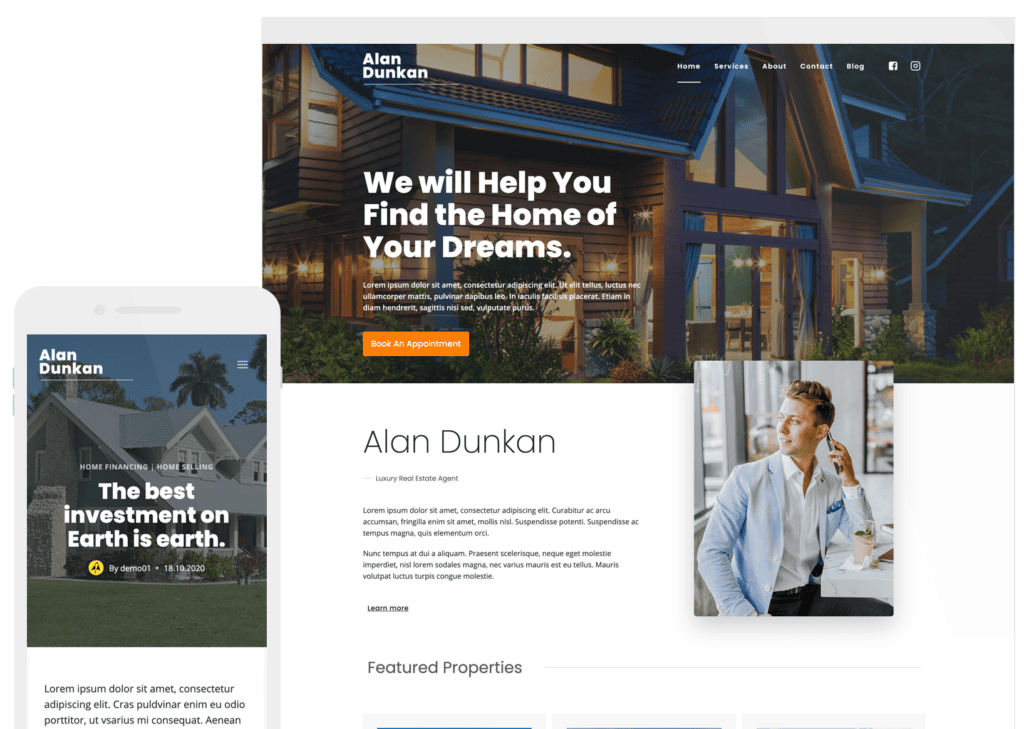
Written by Kathy Zant
Kathy is a writer and speaker who helps businesses and people thrive. She creates some of the best content and tutorials about how to get more out of technology, marketing how-tos that help you grow your business, reports on security issues you need to know as they occur, and gives you all the tutorials to stay ahead and secure your life and business.
By Kathy Zant
Kathy is a writer and speaker who helps businesses and people thrive. She creates some of the best content and tutorials about how to get more out of technology, marketing how-tos that help you grow your business, reports on security issues you need to know as they occur, and gives you all the tutorials to stay ahead and secure your life and business.
Updated July 22, 2024







